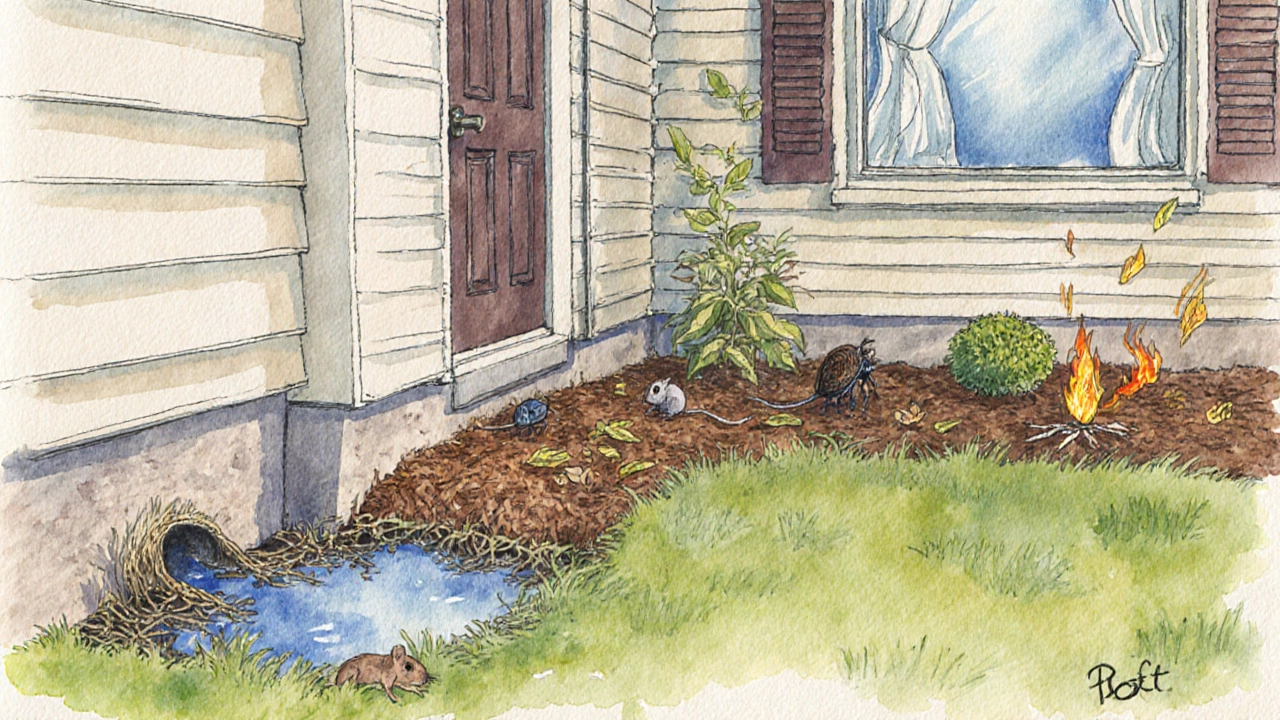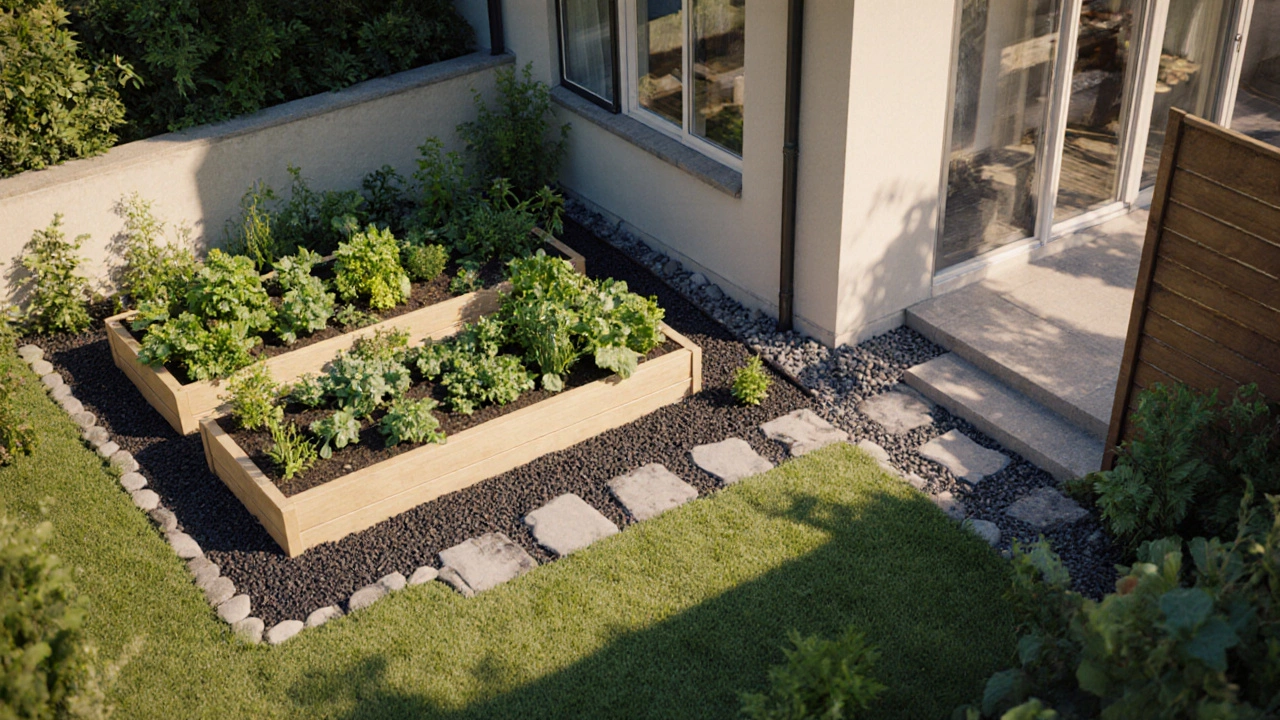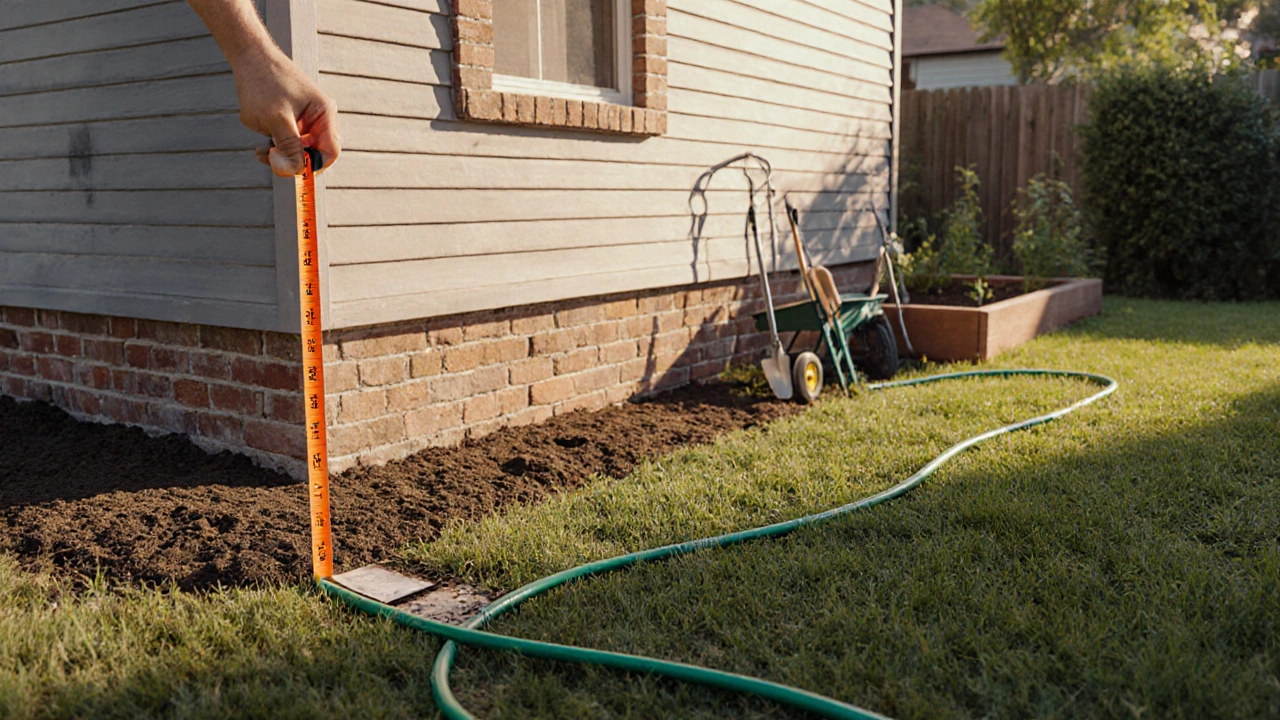When you start a kitchen garden, the first question that pops up is often, "How far should the garden be from the house?" The answer isn’t just a random number - it’s a mix of safety, health, and convenience. Below you’ll find a step‑by‑step guide that turns vague advice into clear, actionable distances for any backyard or balcony garden.
Why Distance Matters
Placing a garden too close to the foundation can create problems you might not notice until it’s too late. Here are the main reasons a proper setback matters:
- Root intrusion: Many vegetables and herbs develop deep root zones. If roots find a path into the foundation or drainage pipes, they can cause structural damage or blockages.
- Moisture management: Water from irrigation or rain can pool against the house, leading to damp walls, mold, and increased heating costs.
- Fire safety: In dry climates, a garden full of dry leaves and mulch can act as fuel for a house fire. Keeping a clear buffer reduces that risk.
- Pest control: Some pests use garden edges as a bridge to the house. A gap makes it harder for rodents and insects to hop over.
- Air circulation: Good airflow prevents humidity buildup around windows and doors, which helps keep indoor air quality high.
Legal and Building Code Guidelines
In New Zealand, the Setback (construction) is defined as the minimum distance required between a building and the edge of a property or any other structure. While the national Building Code doesn’t dictate a universal garden setback, it references the New Zealand Standard 3604 for foundations and moisture protection. Local councils often add their own rules, especially in fire‑prone zones. A quick check with your district council can save you a costly redesign later.
General Rule of Thumb
If you’re unsure, start with a baseline of 1.5 metres (about 5 feet) from any external wall. This distance covers most shallow‑rooted herbs and small vegetable beds while giving enough room for watering equipment and walkways.
For larger raised beds or in‑ground vegetable plots, bump the setback up to 2-3 metres. This extra space accommodates deeper roots, larger irrigation systems, and a clear path for maintenance tools.

Specific Garden Types and Recommended Setbacks
| Garden Type | Typical Plant Depth (cm) | Suggested Setback (m) |
|---|---|---|
| Container herbs (pots) | 15-30 | 0.5-1.0 |
| Raised bed vegetables | 30-45 | 1.5-2.0 |
| In‑ground vegetable plot | 45-90 | 2.0-3.0 |
| Fruit trees | 90+ | 3.0-4.0 |
| Water features / small pond | N/A | 2.0+ |
These numbers aren’t set in stone, but they give you a practical starting point based on root depth and typical maintenance needs.
How to Measure and Plan Your Setback
- Identify the wall or foundation you’re measuring from. Note any windows, doors, or utility lines that could affect placement.
- Mark the minimum setback distance with a garden hose or spray paint. Use a tape measure for accuracy.
- Sketch a simple map on graph paper (1 cm = 0.1 m works well). Plot the marked line, then add your garden footprint.
- Check for obstacles: underground cables, drainage pipes, or termite barriers. Adjust the garden outline if necessary.
- Consider sunlight. A garden placed too far back might fall in the house’s shadow, reducing yields. Use a sun‑path app to verify that the garden receives at least 6 hours of direct light.
- Finalize the layout, then level the soil or set up raised beds within the approved area.
Quick Checklist Before Planting
- ✅ Verify local council setback requirements.
- ✅ Confirm that irrigation runoff won’t flow directly onto external walls.
- ✅ Ensure adequate clearance for garden tools and wheelbarrows.
- ✅ Test soil pH and drainage within the chosen area.
- ✅ Position the garden to capture prevailing breezes for better air flow.
- ✅ Add a mulch barrier (10 cm) along the house edge to reduce moisture migration.

Common Pitfalls & How to Fix Them
Problem: Water puddles next to the house after rain.
Fix: Install a shallow French drain or grade the soil away from the foundation by at least 2 % slope.
Problem: Roots start appearing in a basement window well.
Fix: Cut back the offending plants, add a root barrier (plastic or metal) buried 30 cm deep along the wall.
Problem: Fire‑hazard mulch near a wooden deck.
Fix: Switch to inorganic mulch (gravel) within 1 m of any structure, keep a water source handy.
Mini‑FAQ
Can I place a kitchen garden right up against a fence?
Yes, as long as the fence isn’t part of the house’s structural wall and you maintain at least a 0.5‑metre buffer for airflow and fire safety.
Do raised beds need a larger setback than in‑ground beds?
Usually not. Raised beds sit above the soil, so their roots stay shallower. A 1.5‑metre setback is often sufficient for most vegetables.
What if my property line is very close to the house?
Use container gardening on a balcony or patio. Containers can be placed safely inside the house’s footprint without any setback concerns.
Are there special considerations for Auckland’s climate?
Auckland’s mild, humid climate means drainage is key. Make sure your garden slopes away from the house to avoid excess moisture on the foundations.
How often should I re‑measure the setback after adding new beds?
Whenever you expand the garden. A quick tape‑measure check ensures you stay within safe distances and keep your irrigation system effective.
Next Steps for a Safe, Productive Kitchen Garden
Pick a spot, mark the setback, and start with a soil test. From there, layout your beds, install a simple drainage swale, and plant. Remember, the right distance isn’t just a rule - it’s a foundation for a garden that thrives without harming your home.





